By: Melody Chen, Nicole Chen & Riling Chen
Foreword by Adrian Blackwell
Studio faculty: Adrian Blackwell, Sandrina Kramar, Marie-Paule Macdonald, Dereck Revington, Jonathan Tyrrell
Teaching assistants: Devin Arndt, Nicole Rak.
one s relationship to the land is spiritual there has to be respect for all of creation understanding that everything is animate you re talking about the rocks (grandfathers) you’re talking about the trees you re talking about the water the air in western thinking they make a distinction between animate and inanimate if inanimate objects exist they are there for the taking nobody owns them and to me this has led to the destruction of land to water to resources but there needs to be respect for everything
Scapegoat: Architecture/Landscape/Political Economy, Issue 12, forthcoming 2020
luugigyoo patrick stewart, “refusing the colonial grammar of c\a\n\a\d\a”
…when we encounter an external body that does not agree with our own (i.e. Whose relation does not enter into composition with ours), it is as if the power of that body opposed our power, bringing about a subtraction or a fixation. When this occurs, it may be said that our power of acting is diminished or blocked. In a contrary case, when we encounter a body that agrees with our nature, one whose relation compounds with ours, we say that its power is added to ours, the passions that affect us are those of joy, and our power of acting is increased and enhanced.
Gilles Deleuze, Spinoza: Practical Philosophy, 1970.
Waterloo’s third-year winter studio has always been an opportunity to explore the relationship between architecture and the city. The 2020 studio—“Our House is on Fire”— focuses on the intersection between two contemporary crises: the climate emergency and Toronto’s housing emergency. The challenge of the studio was to design a series of deeply affordable apartment buildings on City-owned and currently vacant sites along Sherbourne Street in the center of Toronto’s Downtown East. Each building was required to integrate complementary public programs at grade that would provide a network of support for low-income residents and form a single community land trust that would secure their affordability in the future.
The work shown here is divided into two parts, the first dealing with material relations, and the second dealing with social relations. Each project grapples with the problems of both biophysical and interpersonal relationality.For the full project description, please refer to the first article of the series, 3A STUDIO / Towards an Architecture of Relation: Designing the Sherbourne Corridor Land Trust.
Part 2: Social Relations
“Our House is on Fire” proposes housing as a right. This right is not simply a requirement for the support of bare life. It requires three qualities: generosity, flexibility and sovereignty. As architects Lacaton and Vassal show in their recent apartment building renovations, housing needs to provide a surplus of space. These examples also illustrate how having agency over one’s own home can reduce residential alienation. Additionally, residents need to feel control and security in their space. Although private ownership is one way to accomplish this, high mortgages lock residents into long-term debt. By contrast, collective ownership is more secure because it provides mutual benefits and responsibilities. Any apartment building needs to address these qualities at three different scales: the broader neighbourhood, the public and common spaces on the site, and the private units within it.
The following projects each explore a different scale of social relation. Garrett McGill and Franklin Min address the concept of propinquity at the scale of the neighbourhood, learning from local experiments of “infill” architecture. Garrett sutures the broken street façade with a light and flexible curtain wall and pushes the building’s mass back from the street. Franklin extends the lessons of Diamond and Myer’s Sherbourne Lanes, by designing a pair of low-rise L-shaped buildings that form courtyards with the existing houses. Melody Chen and Cassandra Lesage each create powerful common rooms within their projects. Melody designs a light-filled multi-height corridor and porch space as both access and social condenser. Cassandra uses subtle changes in level to create common rooms that bridge interior and exterior. Anna Supryka and Maddy Kim find novel ways of making kin within the unit itself, pushing and pulling on the nuclear family to form new domestic constellations. Anna creates an urbanism of micro-units that define spaces shared by a cluster of families. Maddy makes use of the enfilade as an architectural type without corridors to remove the hierarchy between rooms, creating flexible arrangements that challenge users to make their own space.
Propinquity
On Route, Garrett McGill
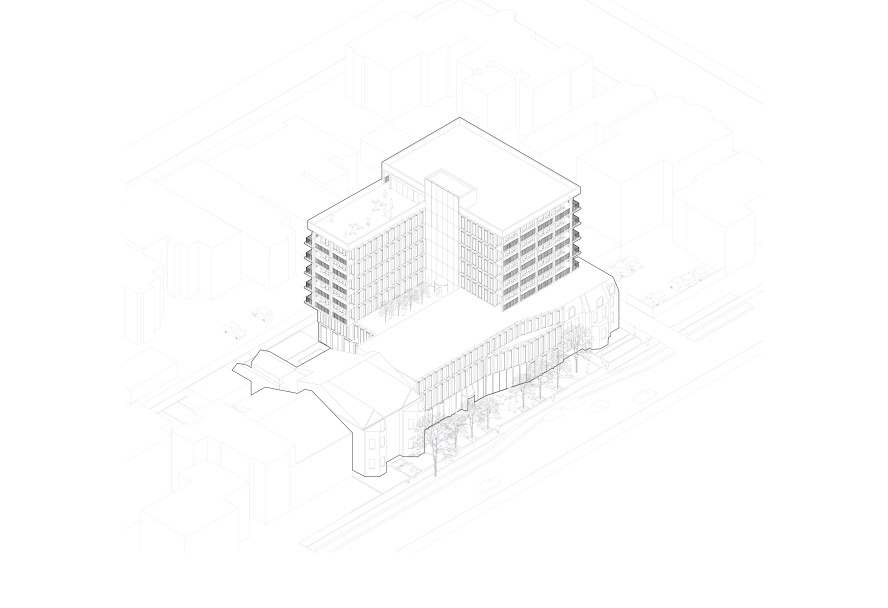
Propinquity first refers to physical closeness between people, but it can be extended to a social distance, the likelihood of coming into contact with others: a functional distance. Design can foster more interactions between people — by designing for exposure and frequency — creating a greater likelihood for connections and friendship to occur in a space, a phenomenon supported by social psychology. Therefore, propinquity is an attribute that can be designed. Architects and urban planners have a unique professional occupation which enables influence of social behaviors of building users through the planning of spatial elements and programs in and around buildings. On Route serves the immediate needs of those experiencing hardship, without relocation. An overnight emergency shelter for elderly men is combined with health and counselling services, community food center, barber and laundromat.
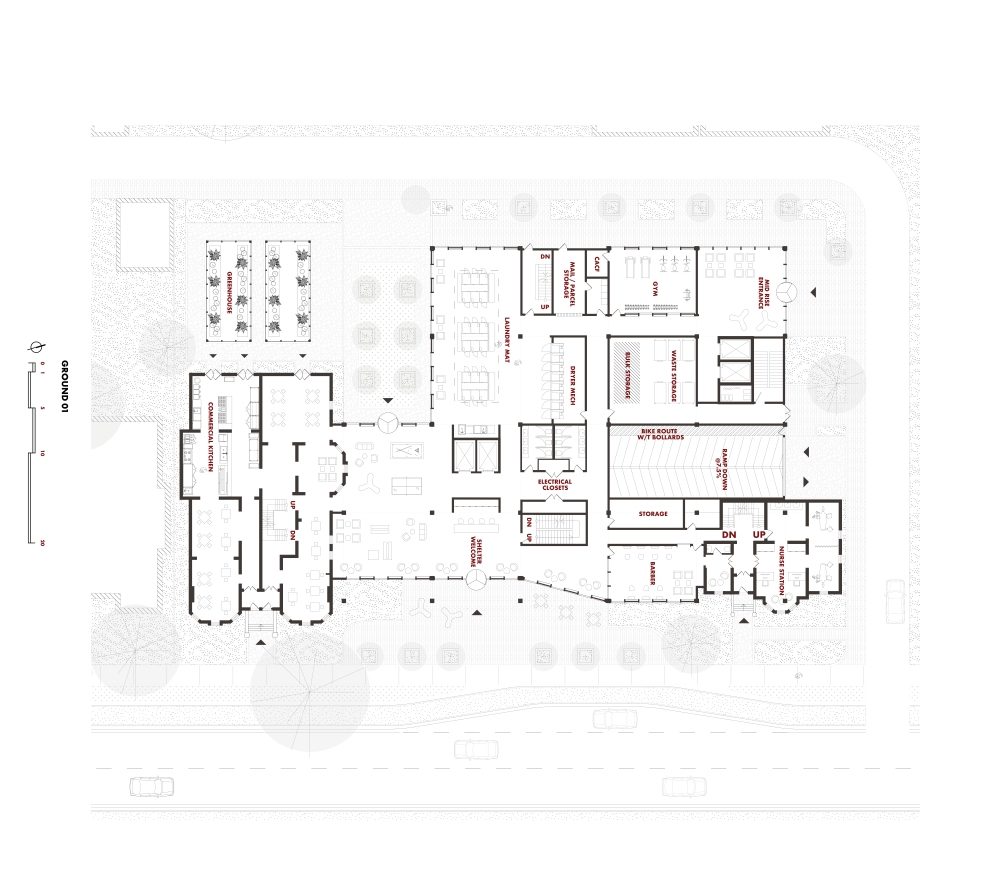
The two existing heritage homes are restored and integrated into the ground floor to maintain the human scale of Sherbourne. The food pavilion to the south and the health pavilion to the north each have a direct entrance from the street to allow visitors to access services they need discreetly. A double height central lounge and laundry mat encourages a lively hub for the community.
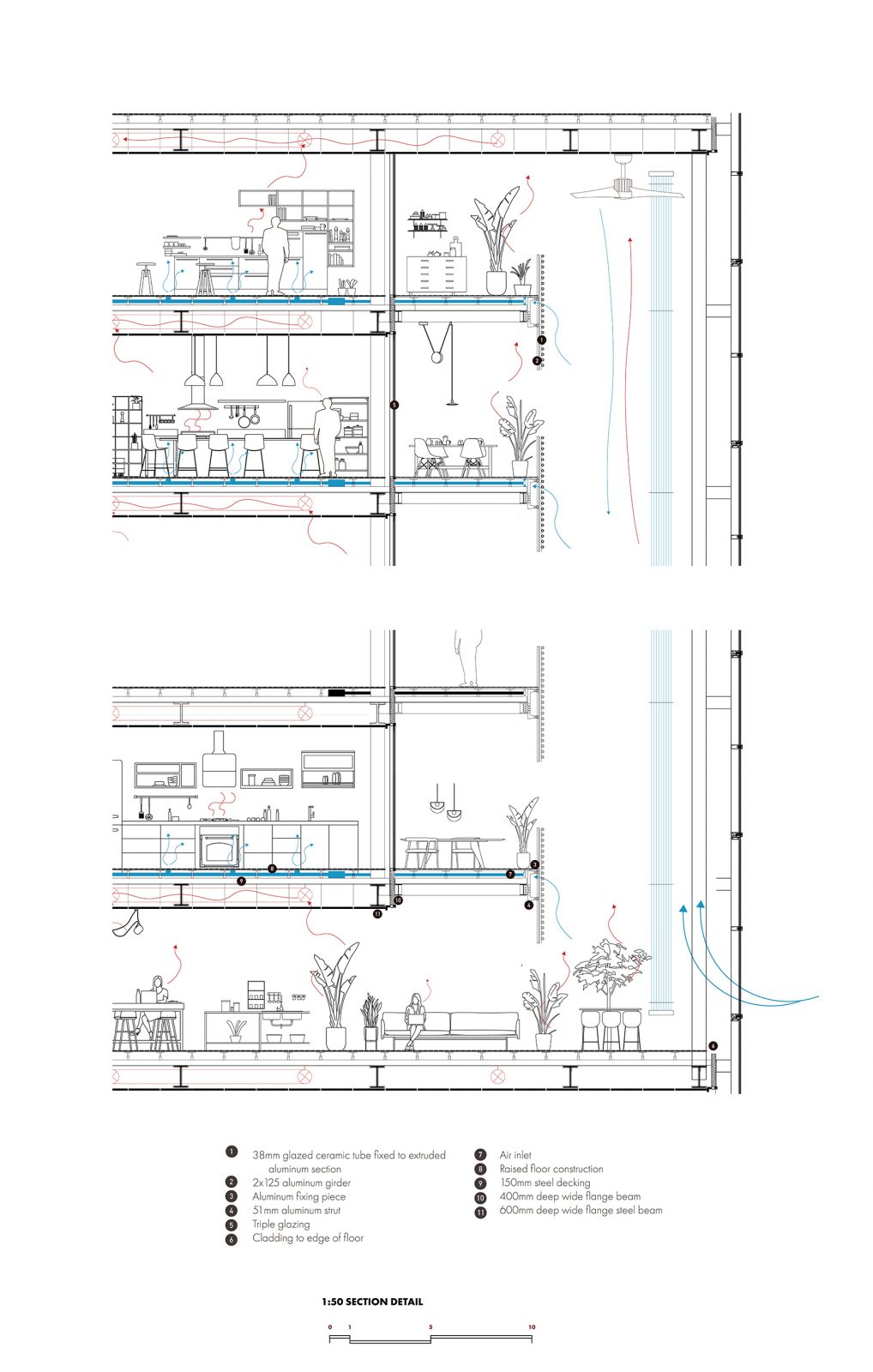
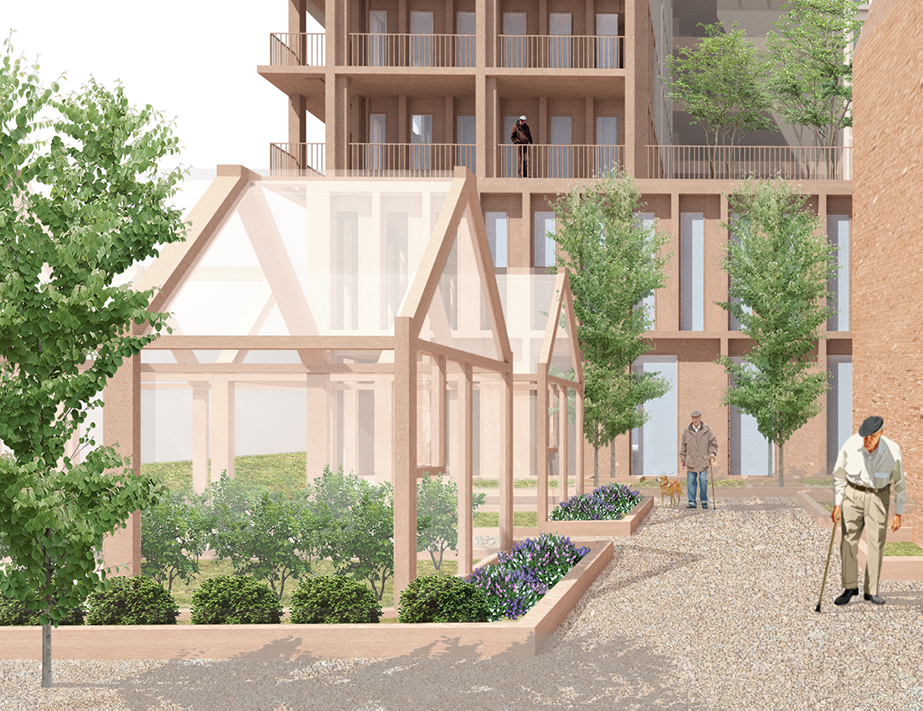
Community First, Franklin Min
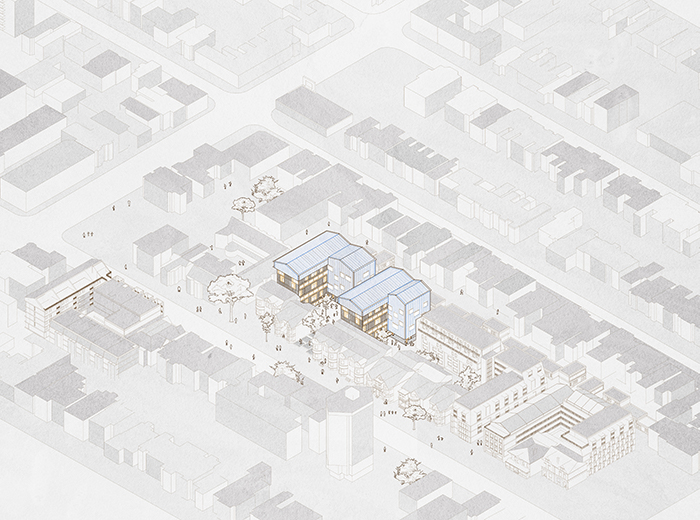
This project plays on multiple levels of proximity. From afar, the urban infill approach respects the existing context and aims to naturally integrate into the neighbourhood fabric. The balanced play of addition and subtraction between architectural masses understands the history of the site and aims to create a kinship between the old and new. Up close, the space focuses on the proximity and availability of social services inspired by the housing first approach. The design encourages and provides opportunity for social gathering and therapy on a voluntary basis that feels welcoming.
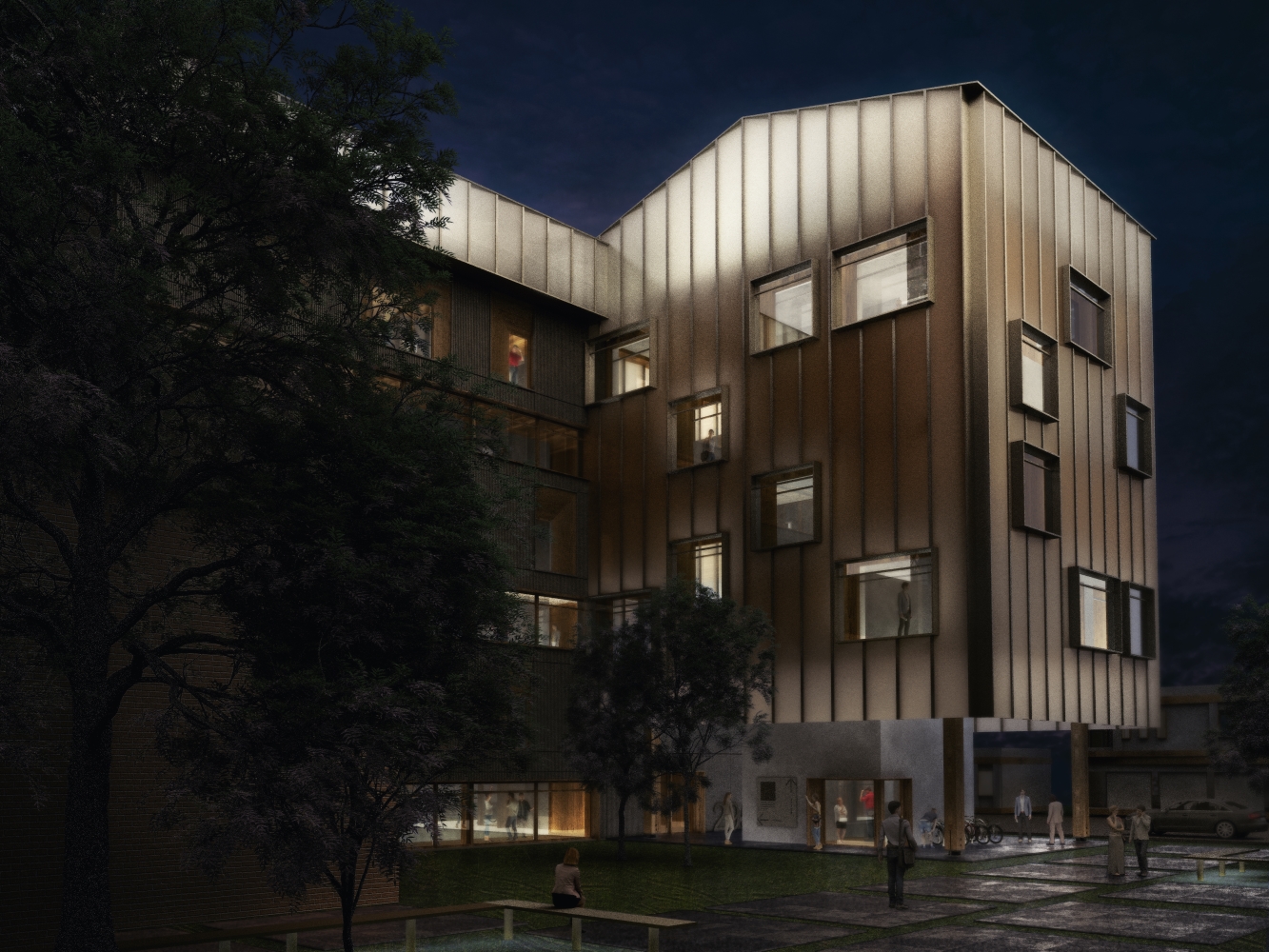
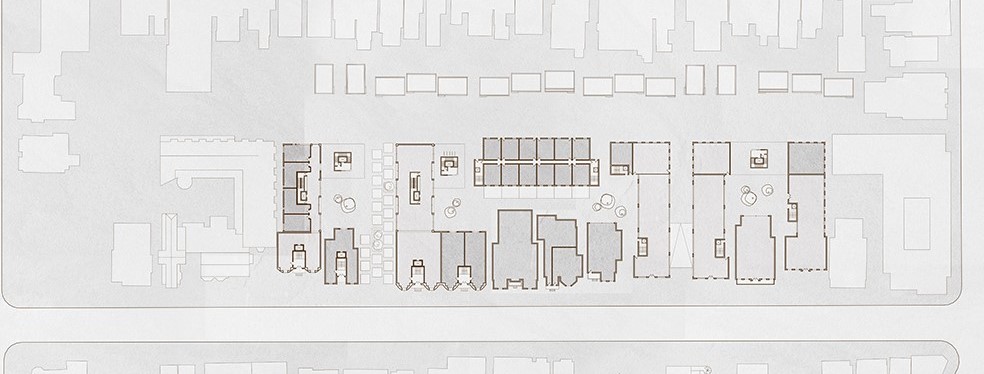
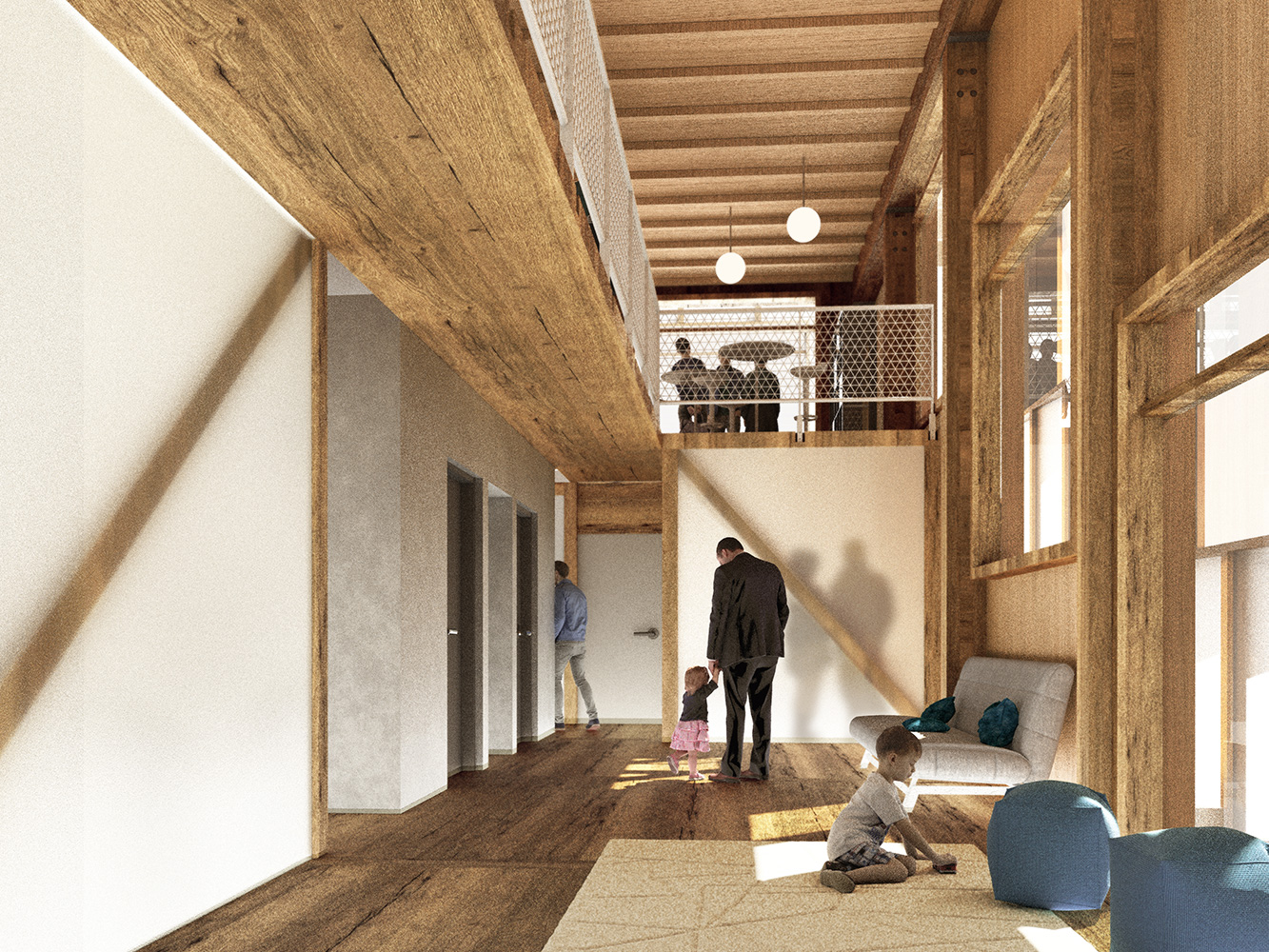
Common Rooms
Home is in the Spaces You Live In, Cassandra Lesage
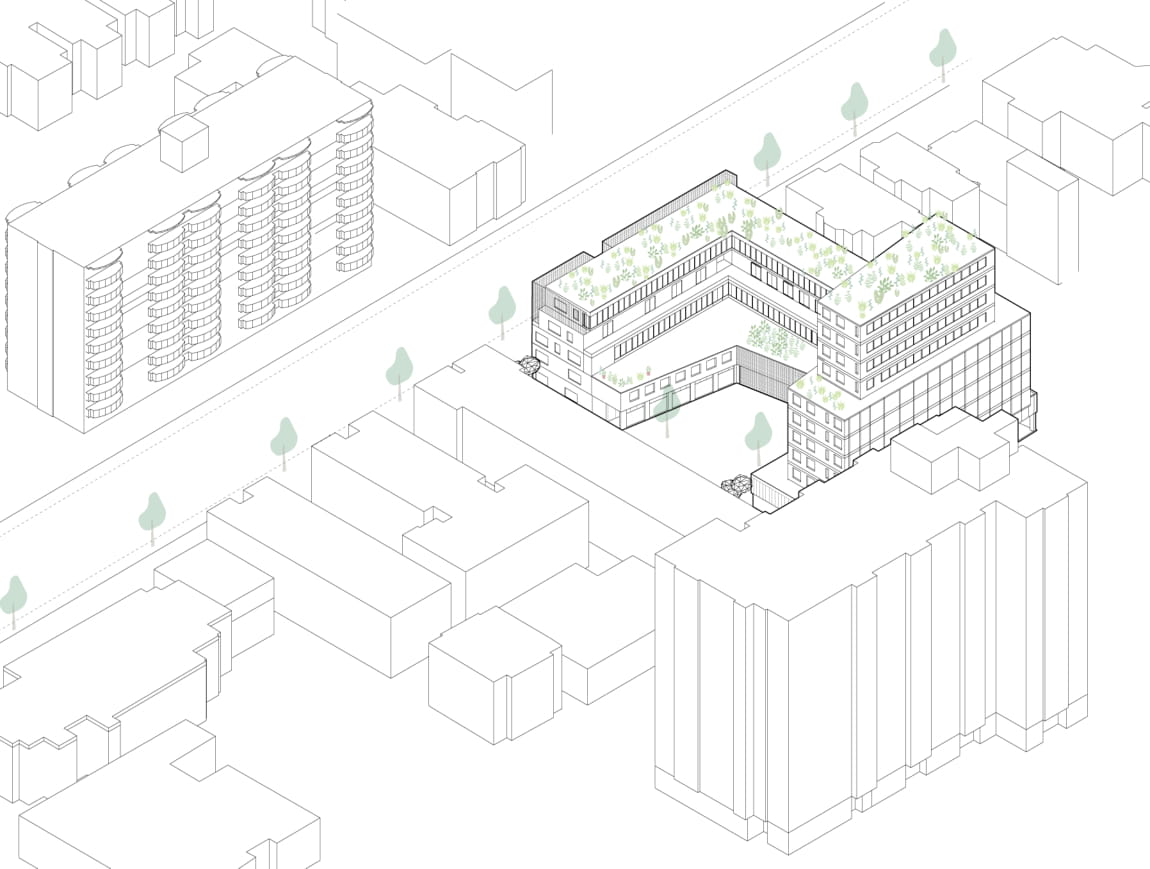
Common spaces can facilitate community and interaction, becoming vibrant and dynamic places. Through a series of common spaces, each of varying scales and levels of privacy, this project creates gradients of social life and interaction between the residents. Hallways are enlarged to create occupiable space that acts as a porch for each unit. Residents also have access to terraces that are public, semi public, and private.
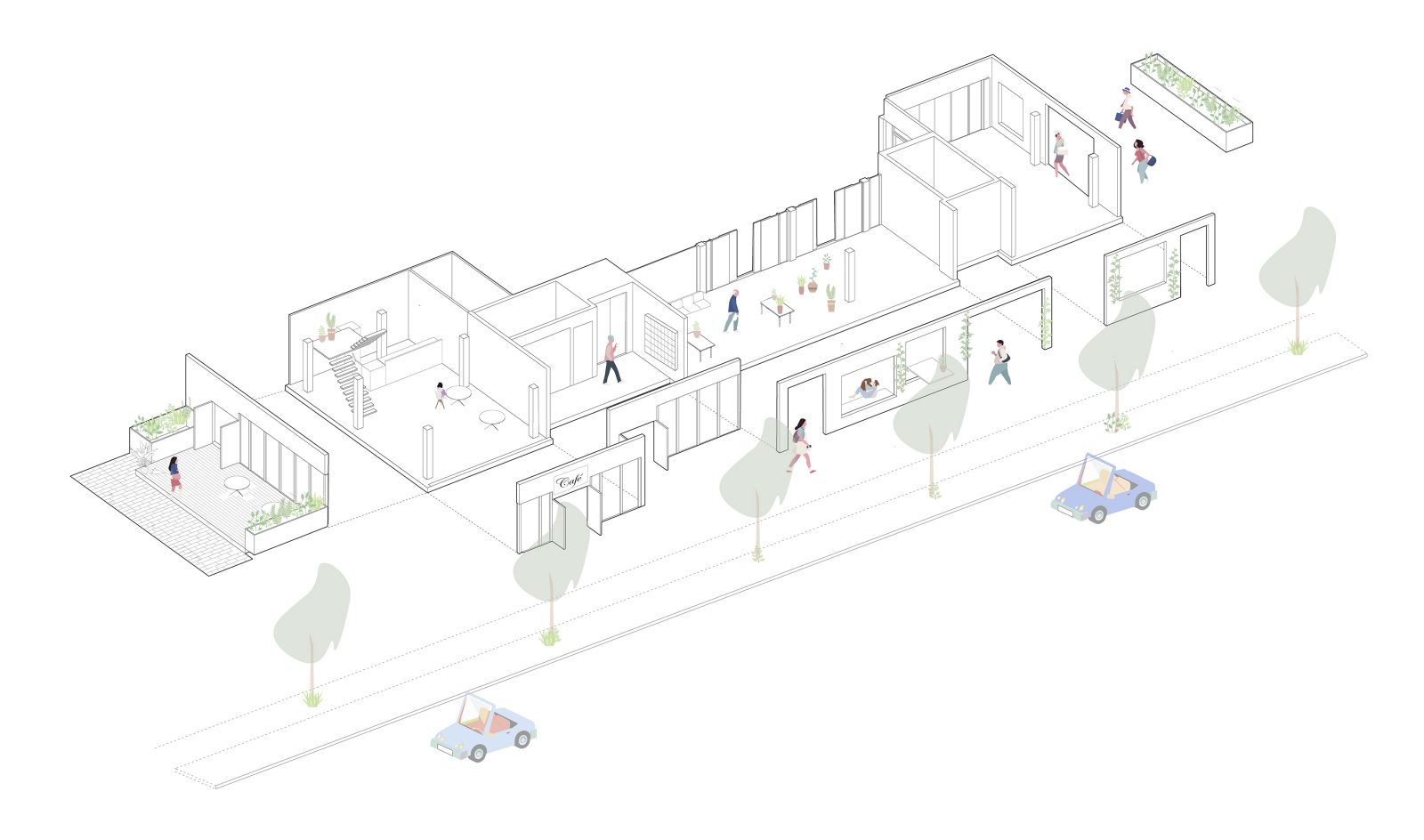
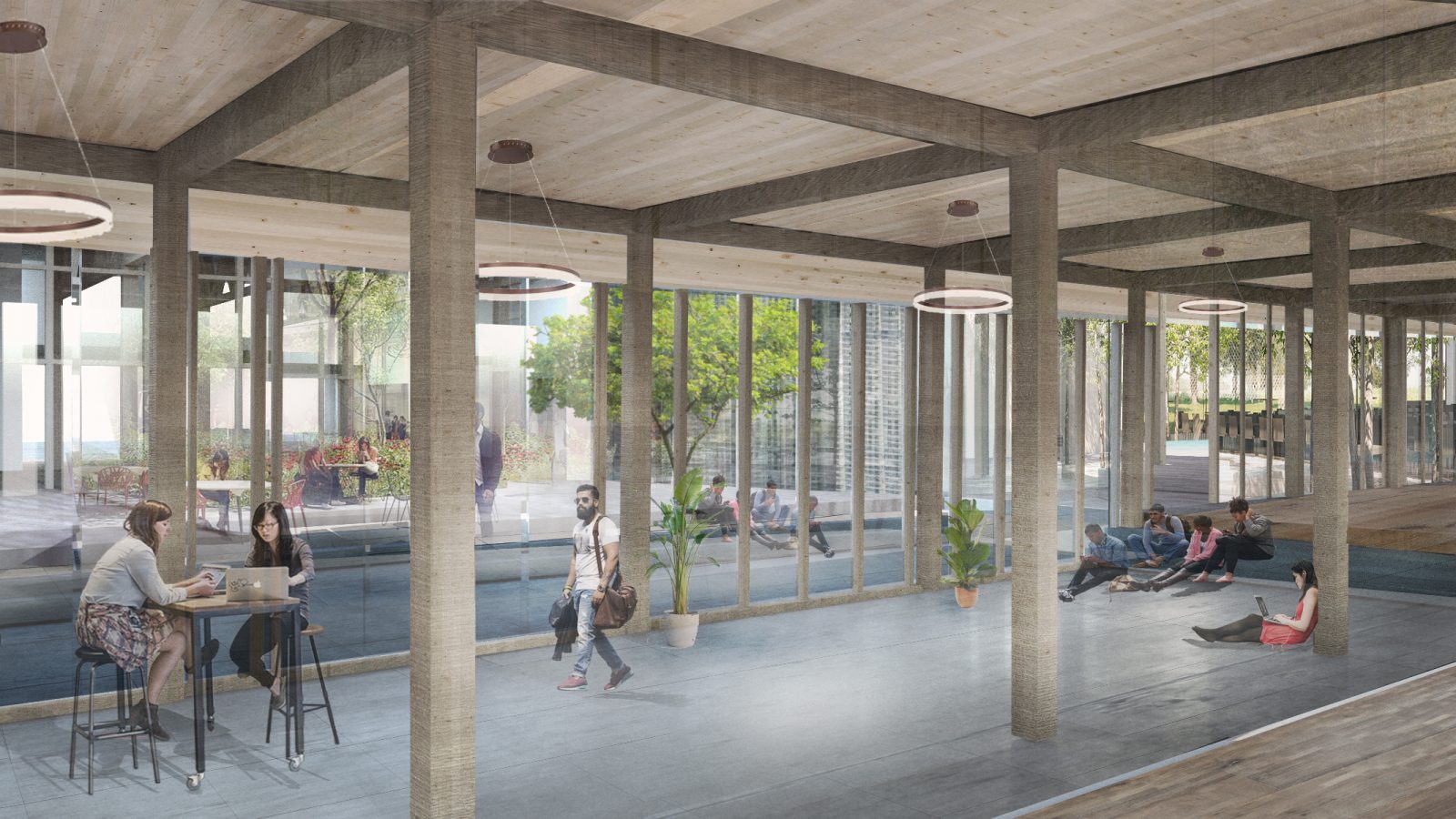
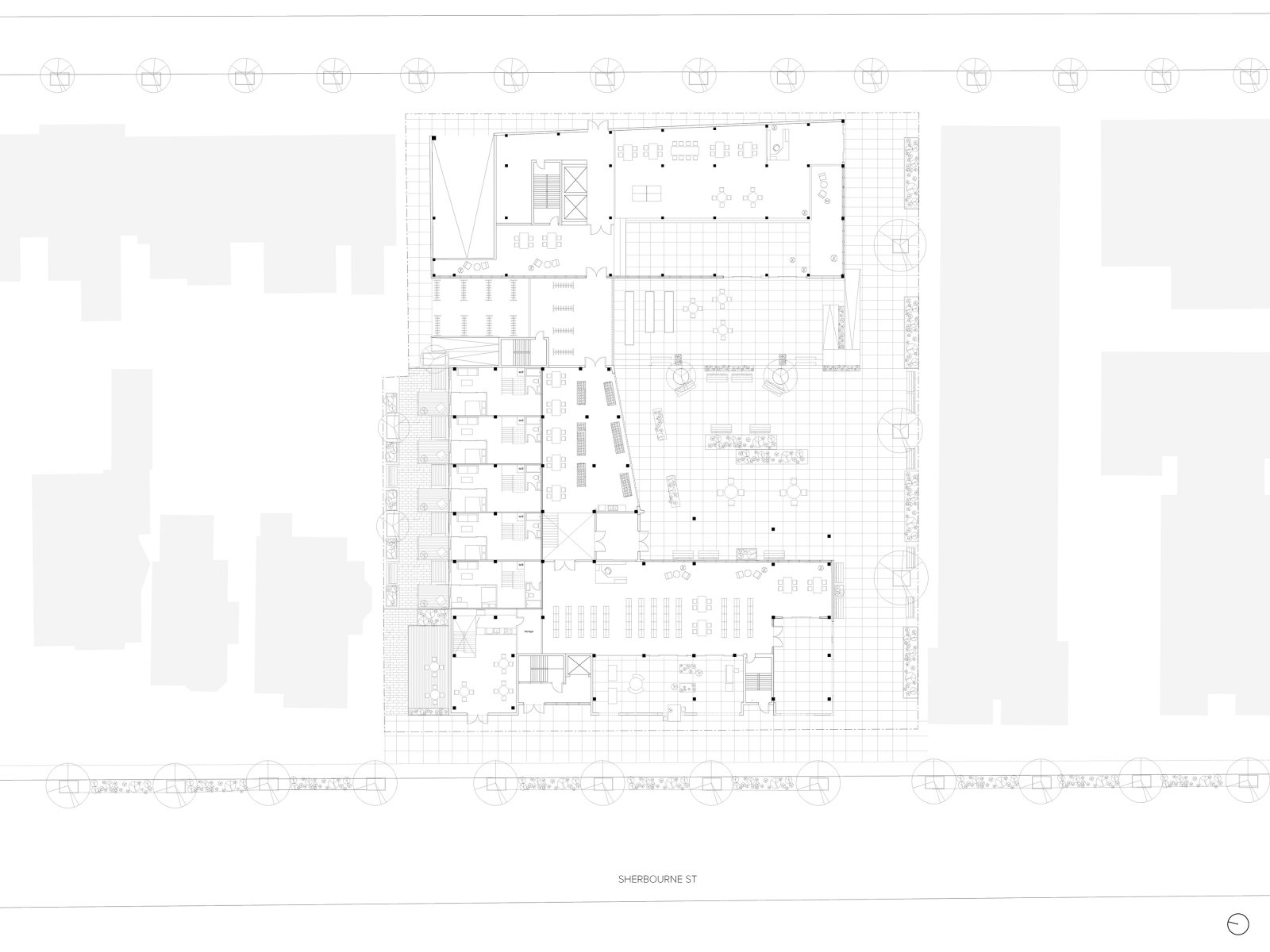
Affordable Housing for Family Living, Melody Chen
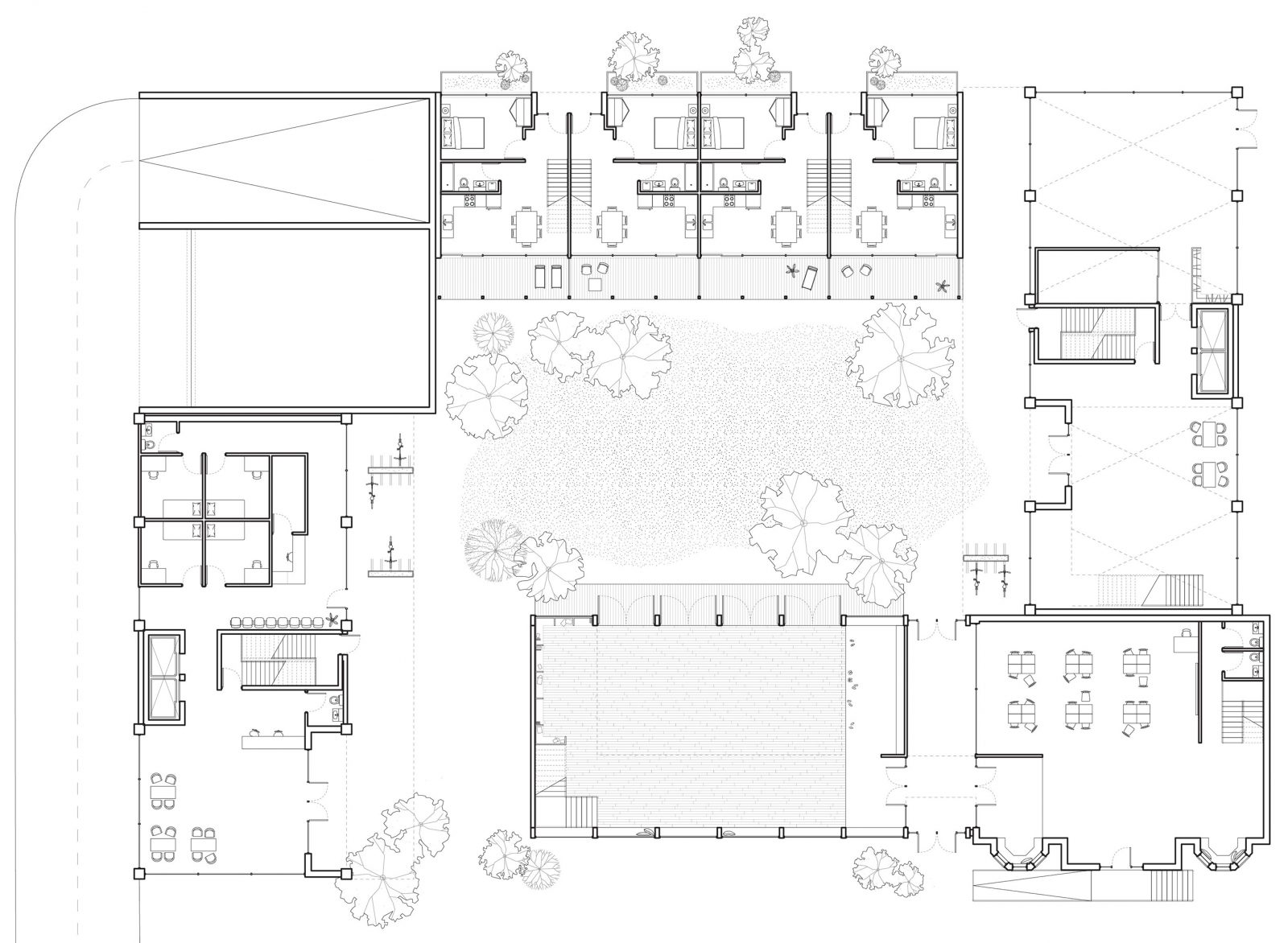
High-density social housing in Toronto has been commonly described as undesirable and isolating. In order to combat these issues, vertical social spaces and increased personal agency were important to the design. This project is made up of a series of different masses that frame an open courtyard within a protected community.
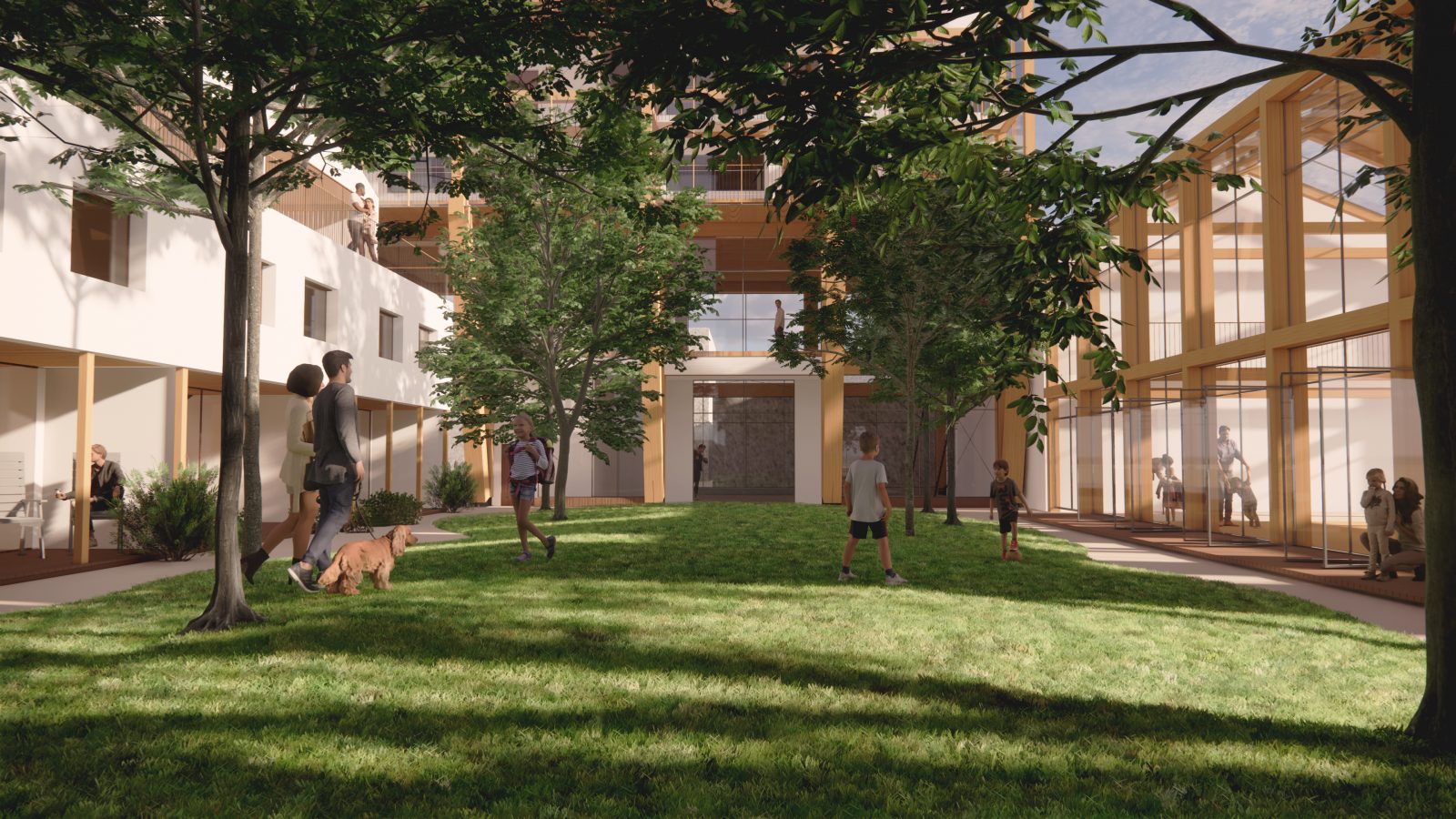
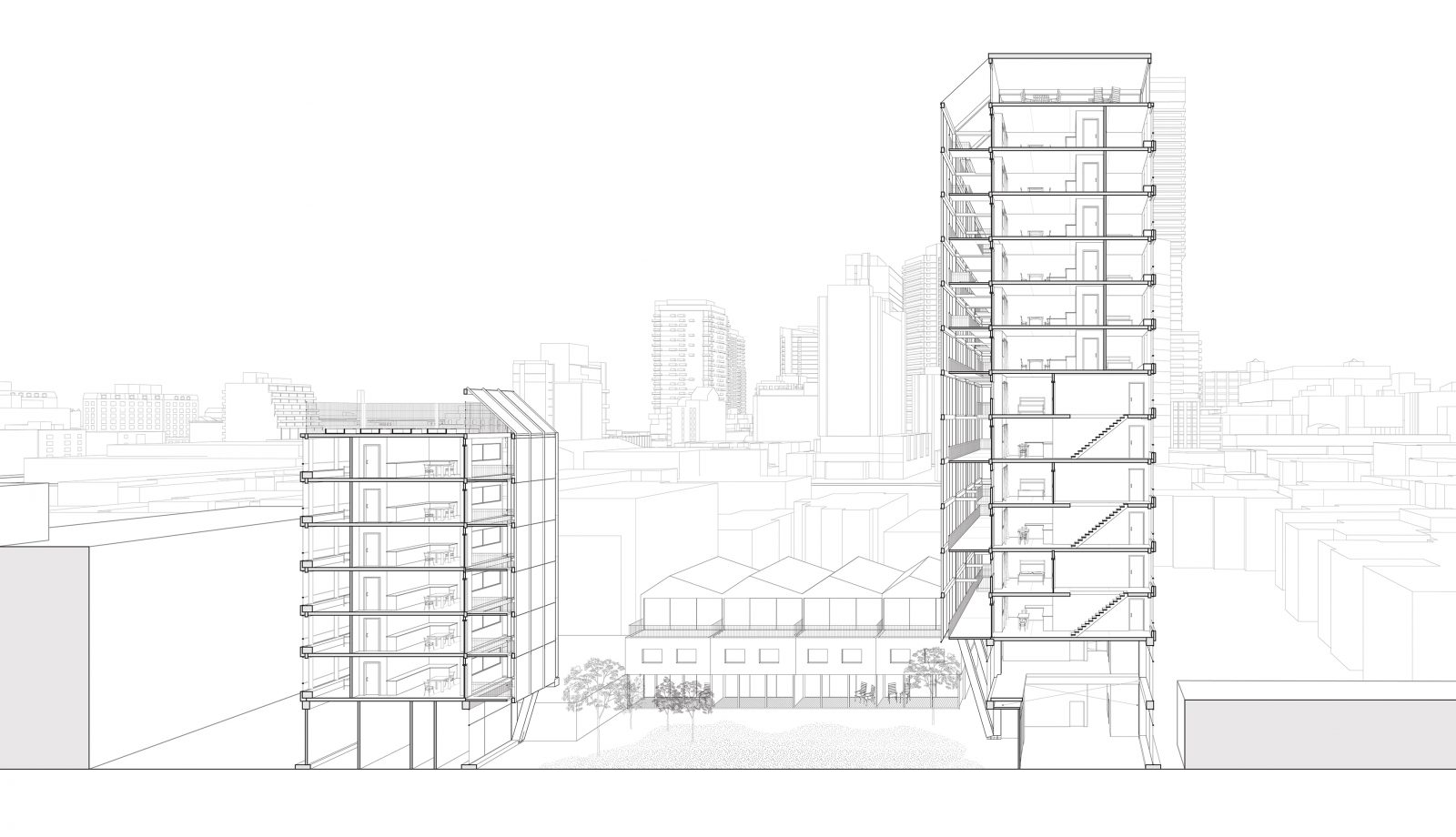
Each tower includes a shared corridor which runs up the entire length that acts as a vertical social space. The configuration of the floor plates includes cutouts to create relationships between the different floors, giving the residents a chance to know their neighbours and creating a sense of community within the building. These winter gardens also provide porch and patio-like conditions for each unit that residents have agency over. The ability to personalize their units provides families with an increased sense of home.
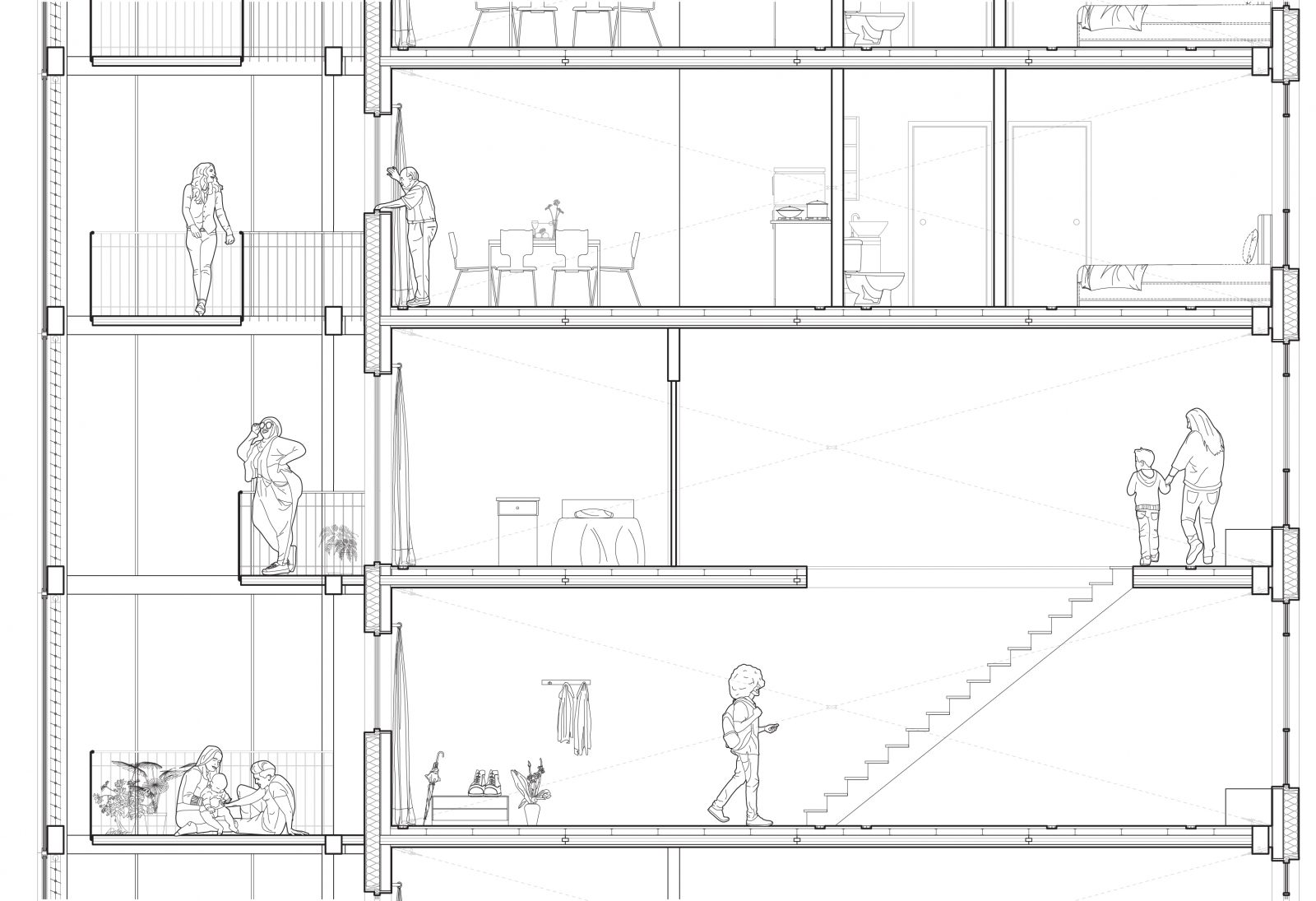
Making Kin
Room to Grow, Anna Supryka
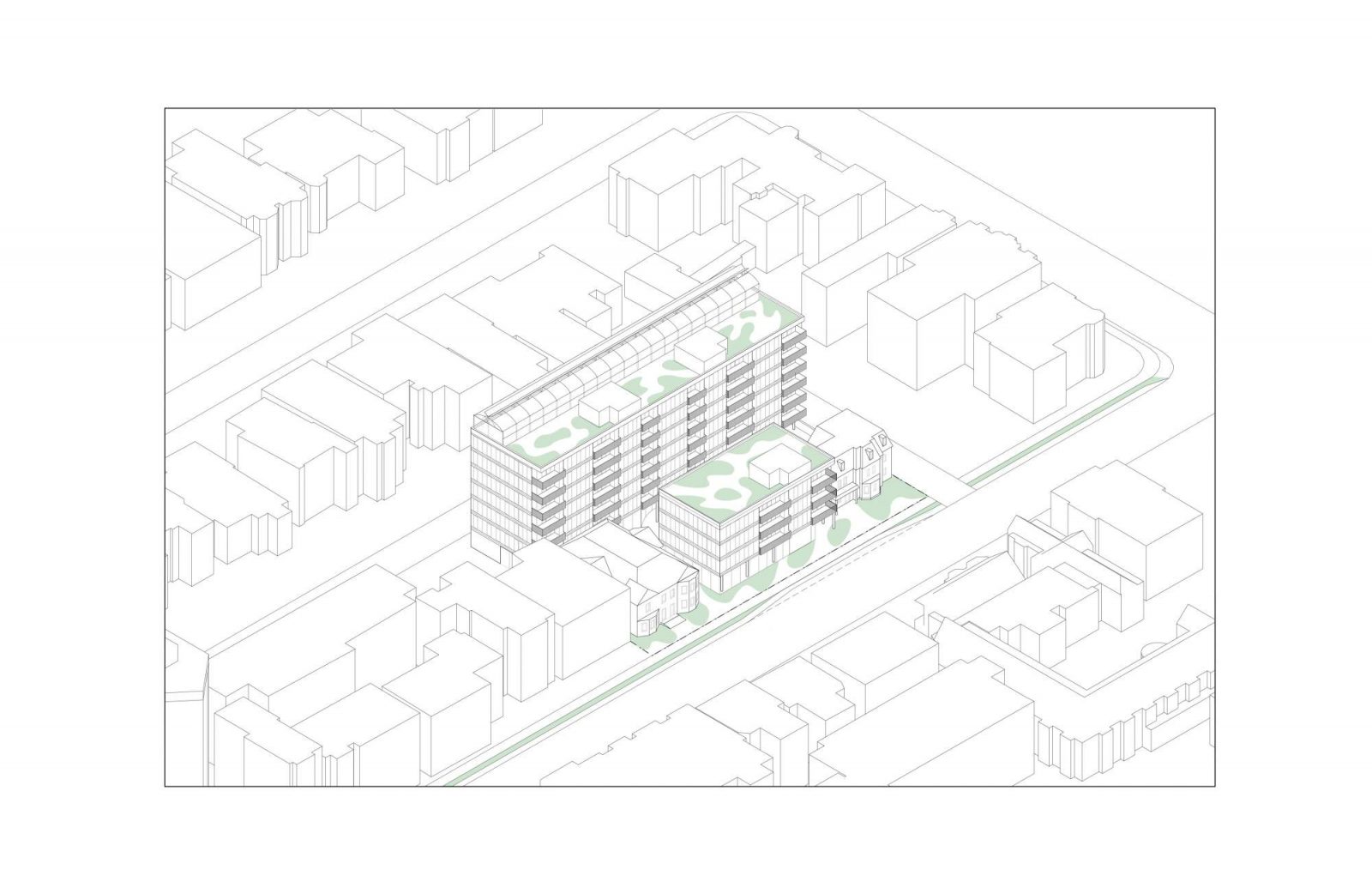
To many of us, family is everything. Whether you define family as your parents, cousins, friends, or mentors, these are the people we rely on and grow with. Designed for women and their children experiencing homelessness, this co-operative housing complex prioritizes opportunities to build these familial support networks.
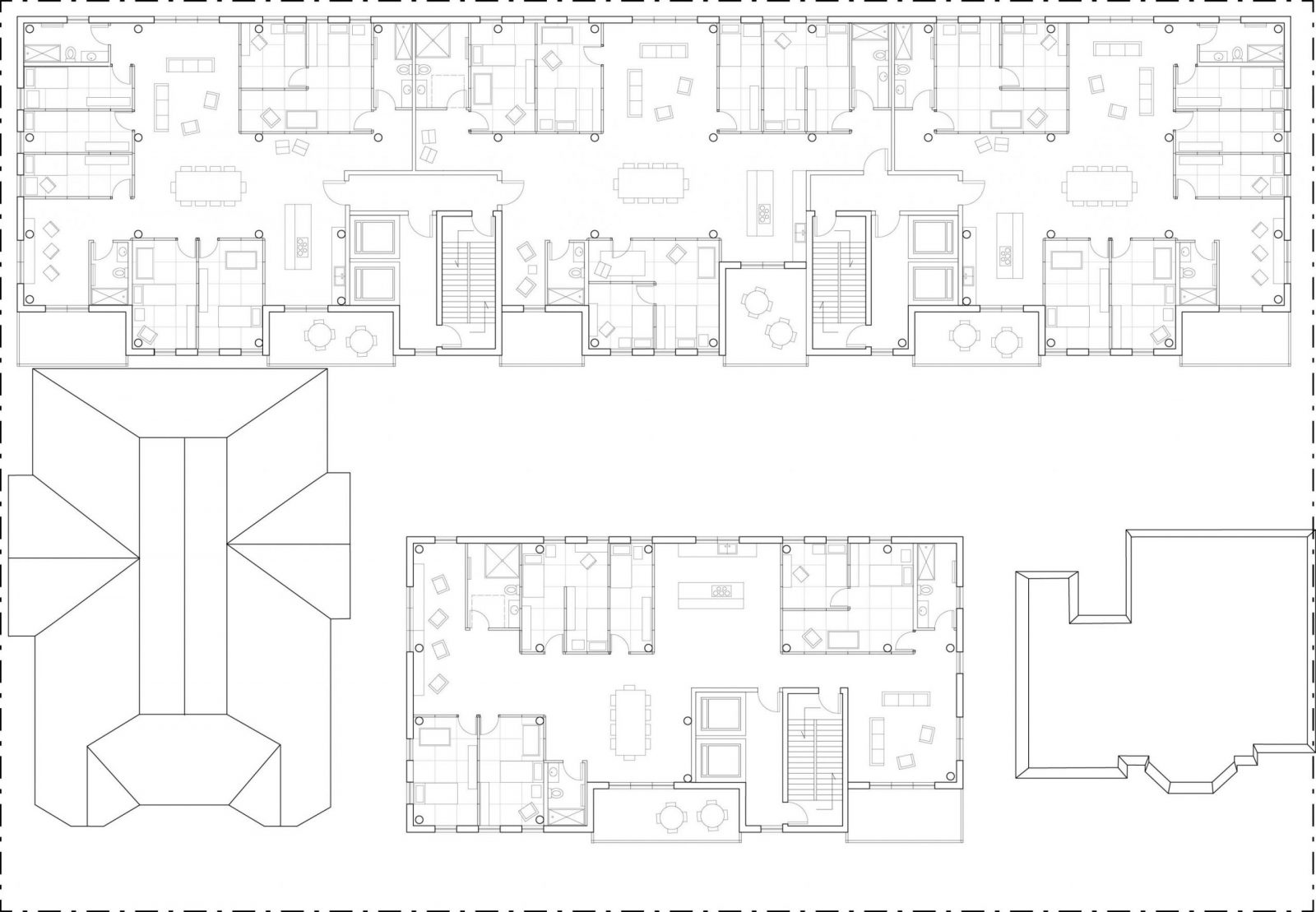
Each apartment houses up to nine related or unrelated residents. Flexible private bedrooms accommodate a variety of existing relationships, while communal kitchen and living spaces support opportunities to grow as a collective. Facilities on site supports ties within the greater Sherbourne Street area, inviting connections through cooking, fitness, and play.
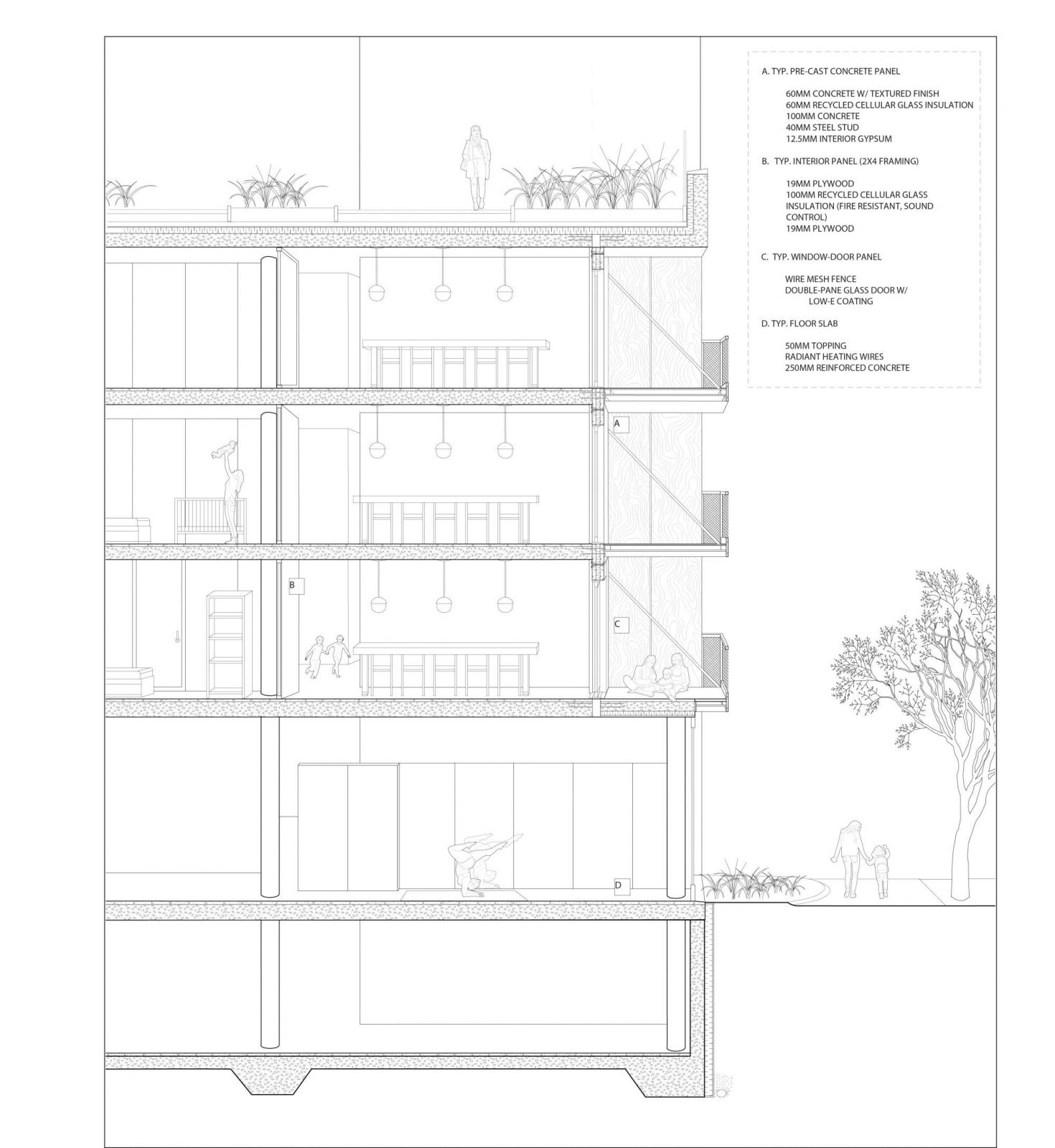
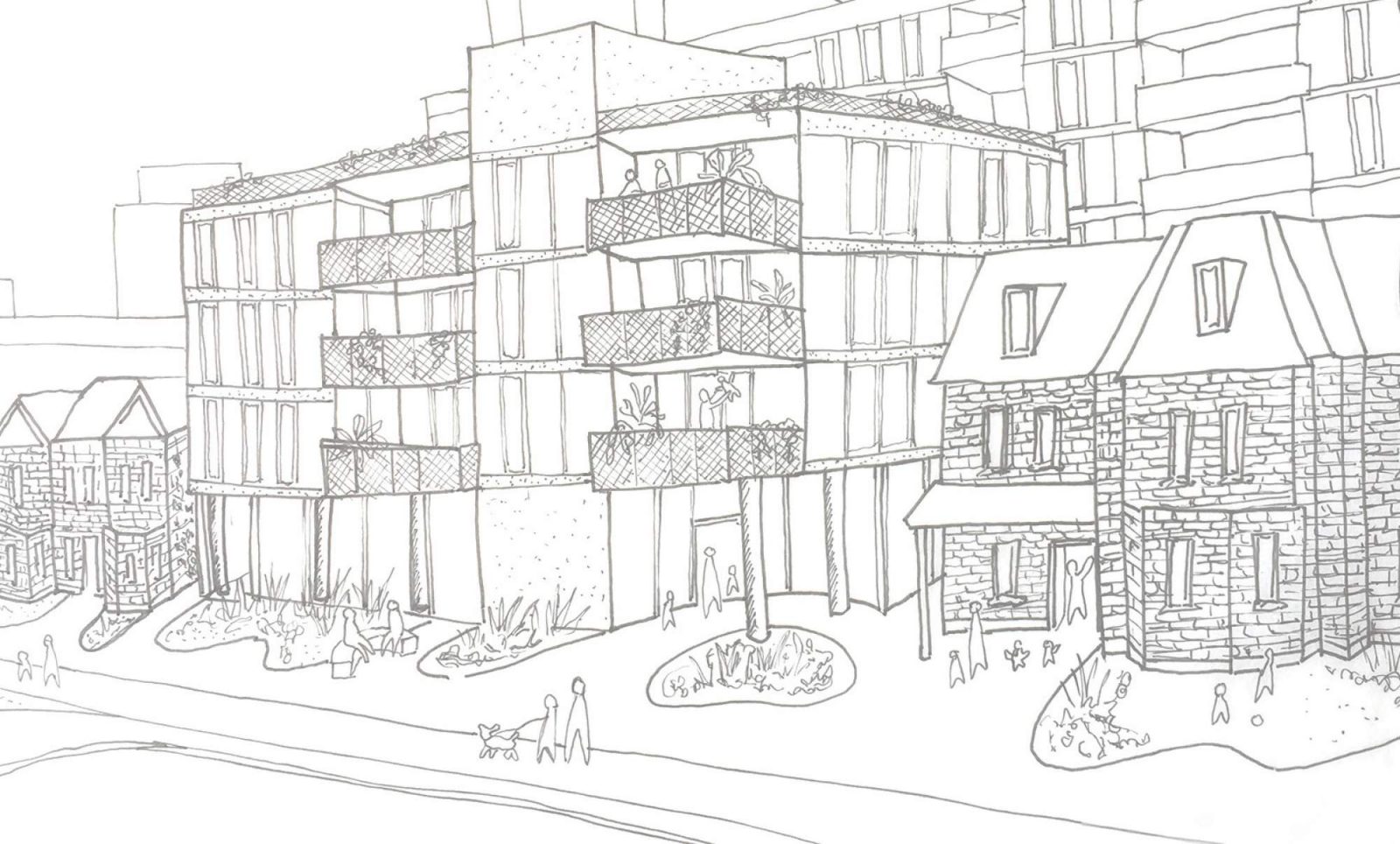
Loving Neutrality, Maddy Kim
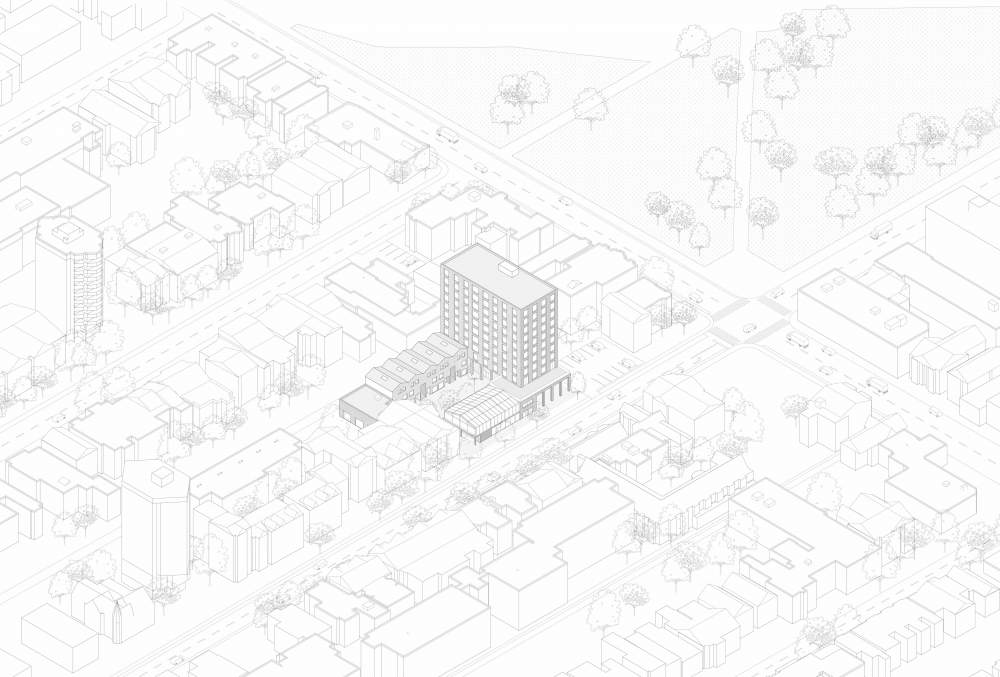
Robert and Alison Smithson wrote on “loving neutrality”, a phrase characterizing a neutral space as an inclusive space: a space for anything and for anyone. Through the creation of socially and energetically open, flexible spaces, the project provides cooperative housing for families on the Sherbourne Corridor.
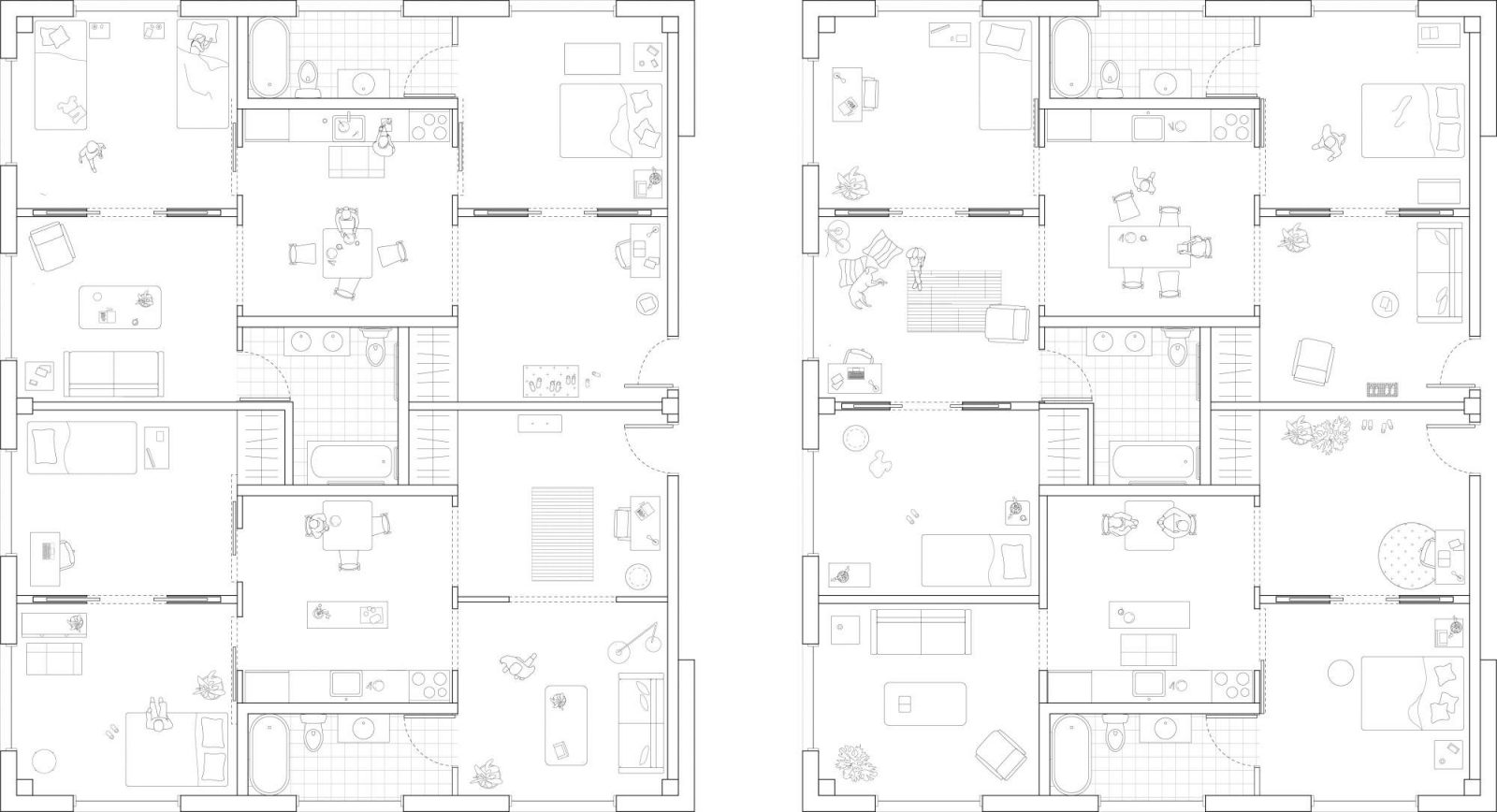
Drawing precedent from the work of MAIO Architects, the unit is a fluid, flexible space: a series of rooms tessellating around a central strip of kitchens and bathrooms. As rooms are added or subtracted, the unit may grow or shrink to accommodate families of varying sizes. This layout challenges the rigid, hierarchical structure of the typical household and is capable of adapting to its residents’ evolving needs.
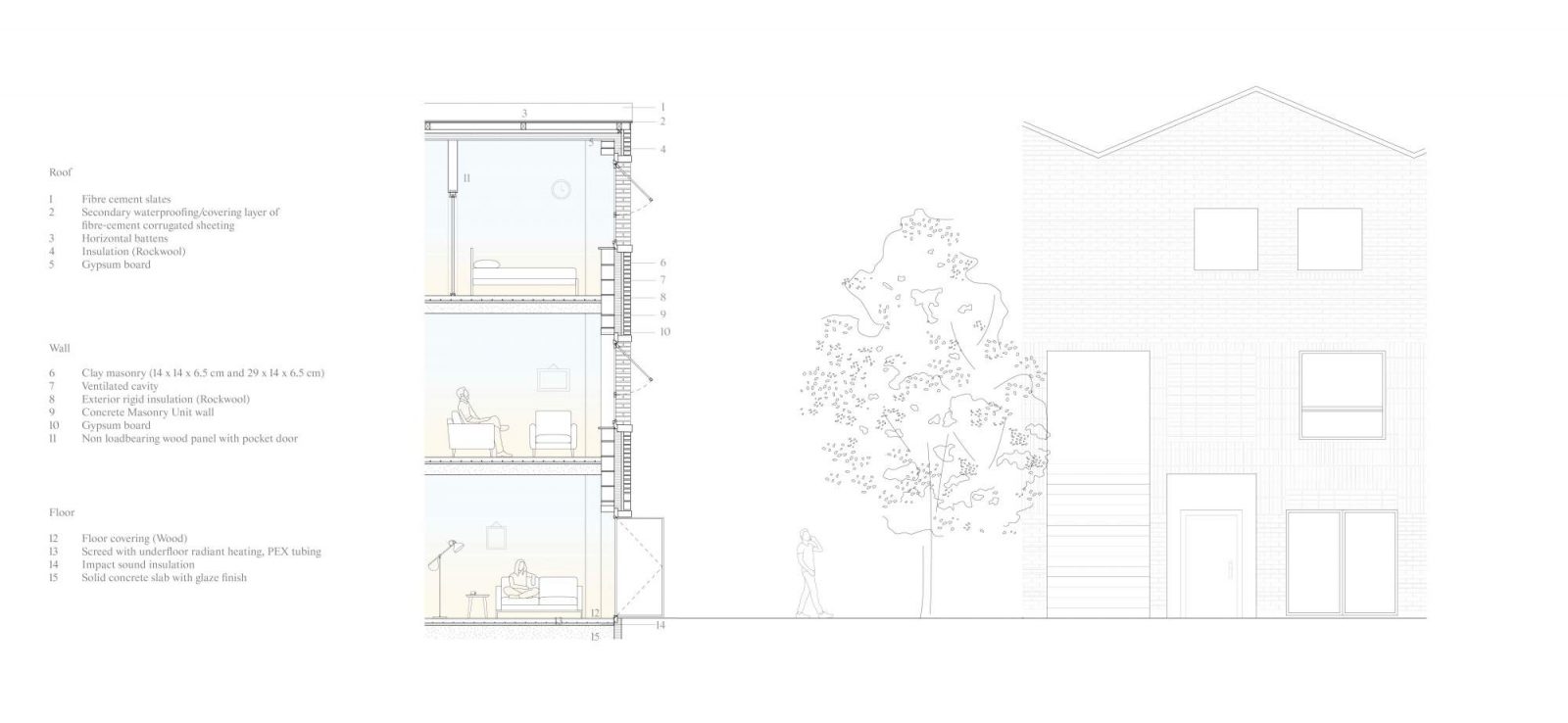
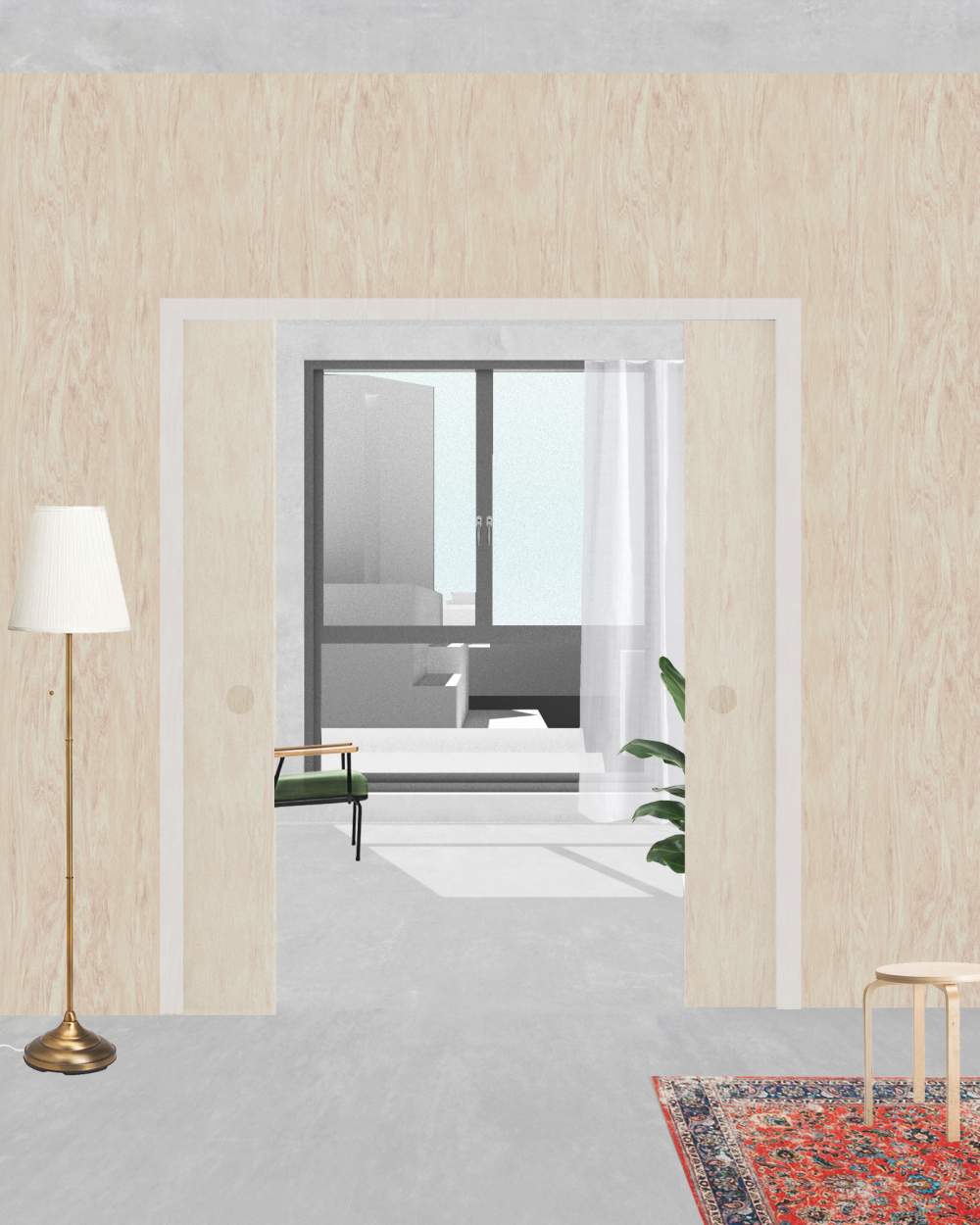


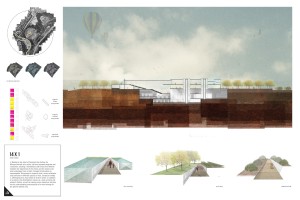


Leave a Reply